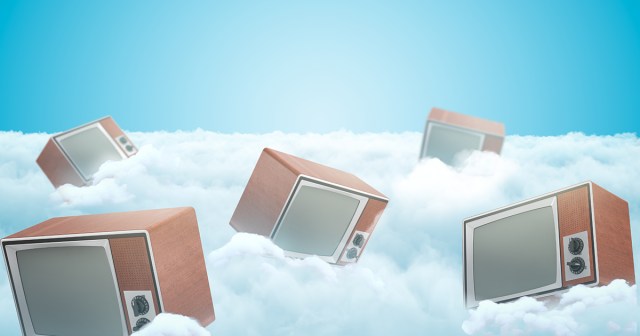
We’re looking at a pretty long and slow death spiral for the current linear TV ecosystem. The end will come in one of two ways.
“At some point over the next 10 years, cord cutting will have grown to a point where it’s no longer profitable for the people running the current linear pay TV system to keep it going the way they have for the past 40 odd years,” says Alan Wolk, co-founder and lead analyst for media consultancy TV[R]EV, writing at Next TV. “That doesn’t mean linear ‘cable TV’ will implode or that the current players will disappear. It just means that things will be different.”
TV habits die hard. Because of that the division between TV and OTT will become indistinguishable and won’t matter to people outside of the tech and media analytics biz.
Guy Bisson, co-founder and director at Ampere Analysis made a similar point recently to me. “We’re at the stage where most households have multiple paid streaming service and multiple ad supported streaming services that all these distinctions between AVoD, SVoD, linear, BVoD and FAST are irrelevant,” he said. “As far as the consumer is concerned it’s all television. So, at that point we just need to call it TV. It is just migrating from one means of delivering Free to Air TV to another. The migration is a tech shift not a business or economic shift.”
READ MORE: How Pay TV Ends (Next TV)
Wolk anticipates one of two things will happen in the US market. In the first scenario linear TV’s main players (Comcast, DiscoveryWarner, Disney and ViacomCBS) will begin to realize that there’s no profit to be made from creating separate programming slates for both streaming and linear and will gradually start to integrate them.
“Some may do it gradually, some may do it suddenly, it really depends on how much the numbers and the moves their competitors make will take them by surprise.”
The second possible outcome is that the various MVPDs and vMVPDs that keep cable distribution going will come to a similar conclusion. Wolk says, “They’ll slowly begin to realize that the amount of money they spend on carriage and retrans fees and maintaining their set top boxes and apps isn’t being offset by subscription fees and ad revenue and that it no longer makes sense to view the whole thing as a loss leader to get people to sign up for broadband.”
“We’re at the stage where most households have multiple paid streaming service and multiple ad supported streaming services that all these distinctions between AVoD, SVoD, linear, BVoD and FAST are irrelevant. As far as the consumer is concerned it’s all television.”
— Guy Bisson, Ampere Analysis
If the various parties are smart, die-hard linear TV consumers won’t really notice the change, which will be presented as a series of “upgrades” that still give viewers access to hundreds of linear channels. Those channels will, of course, be part of the various FASTs (Free Ad-Supported Streaming TV), not separate networks, but a well-designed UX will make that largely unnoticeable.
“New streaming bundles will take the edge off the confusion of á la carte, which will still be available as an option, but an increasingly unattractive one, devoid of the price come-ons the various services will have on offer for viewers who sign up for yearlong bundles.”
Over-the-air broadcast is the last piece here, says Wolk, and while it’s easy to predict that it will just fade away, that’s an unlikely outcome for both legal and economic reasons.
“Local broadcasters have been making a to do about ATSC 3.0 for a while now, but it remains to be seen if there’s much of a market for over the air TV at all once pay TV delivery goes to full time streaming.”
The bottom line is that traditional pay TV won’t disappear. It will merely be reincarnated in a brand new form, one that is no more or less dramatically different than the one that arose when the industry shifted from broadcast to cable back in the 1980s.





Discussion
Responses (2)